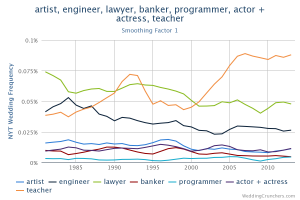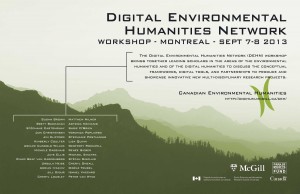
As of August 30, 2013 the activities of Digital Humanities Observatory have ceased.
I just got an email today announcing the end of the Digital Humanities Observatory of Ireland. The DHO Home Page has the same text. As I was on the external board for a few years I’m sorry to see this neat Observatory end. (No more two day trips to Ireland in December.) Like many units set up with grant funding it was probably inevitable, but it is still a shame, especially since they were running useful infrastructure for the discovery of Irish projects, DHO:discovery and DHO:DRAPIer.
Others have noted the importance of learning from endings in a field where we make a lot of noise when starting things. Honest appraisals of why things ended are few and far between. This summer I heard Quinn Dombrowski talk about “What ever happened to Project Bamboo?” at DH 2013. (You can see my conference notes on DH 2013 and her talk here.) What can be learned from the spectacular rise and now closing of the DHO? Here are some lessons:
- Anything funded by a time-limited grant as the DHO was is bound to run out of money. Units on soft money can survive over time, but they have to find new revenue streams.
- Grant funded units that build things (like DHO:Discover and DRAPIer) that are meant to be useful over the long term should build succession planning into their development. Don’t count on getting more money just because you built something neat. There is a neat paper waiting to be written about how one can build for succession or hand-off.
- Give yourself time at the end to properly archive what you have done. Make sure that the useful knowledge gathered is saved and accessible.
- Tell people that the project is over, as the DHO has done. Don’t just close the site – put an announcement up.
- Write an obituary, if you can, so that others can learn from the project.
- Grieve don’t hide. We often want to slink away when something closes, but we should be allowed to grieve the passing of centres, projects and so on. I’m sad that the DHO is closed, even though I was only looking in from the outside.
The full text of the message continues:
Over the past five years, the Digital Humanities Observatory (http://dho.ie) has been a crucial component of the Humanities Serving Irish Society initiative funded under PRTLI 4. The DHO has carried out an extensive programme of lectures, workshops, summer schools, symposia and public lectures. These have been eagerly received and we have hopefully contributed to raising the level of digital humanities scholarship amongst Irish scholars, enhancing skills and reputations not just in Ireland, but also in Europe and around the world. We have developed and deployed creative, and innovative digital platforms such as DHO:Discovery (http://discovery.dho.ie) and DHO:DRAPIer (http://dho.ie/drapier) that have embraced the needs of HSIS scholars and established a strong and respected Irish position in the Digital Humanities leading to Irish participation in exciting new European initiatives such as DARIAH. In an effort to explore the possibilities of Digital Humanities online, and in collaboration with our HSIS partners, we have also built many cutting-edge digital editions and catalogues such as Saint Patrick’s Confessio Hyperstack (http://www.confessio.ie/), the Doegen Records Web Archive (http://dho.ie/doegen/) and Reading East (http://www.ucd.ie/readingeast/).
In the immediate term the assets of the DHO will be maintained directly by the RIA. Please use the contact form (http://dho.ie/contact) should you need to be in touch with the those maintaining the DHO assets.
Strong Irish engagement and participation in European projects is one of the many testaments to the success of the DHO and of the HSIS consortium. In the future the newly formed Irish Humanities Alliance (https://www.ria.ie/about/our-work/policy/irish-humanities-alliance.aspx) will be fulfilling a role of humanities advocacy on behalf of Irish higher education institutions. The investment in HSIS and the DHO has put Irish humanities scholars in a solid position to continue to grow this valuable community and allow it to flourish in the future.


